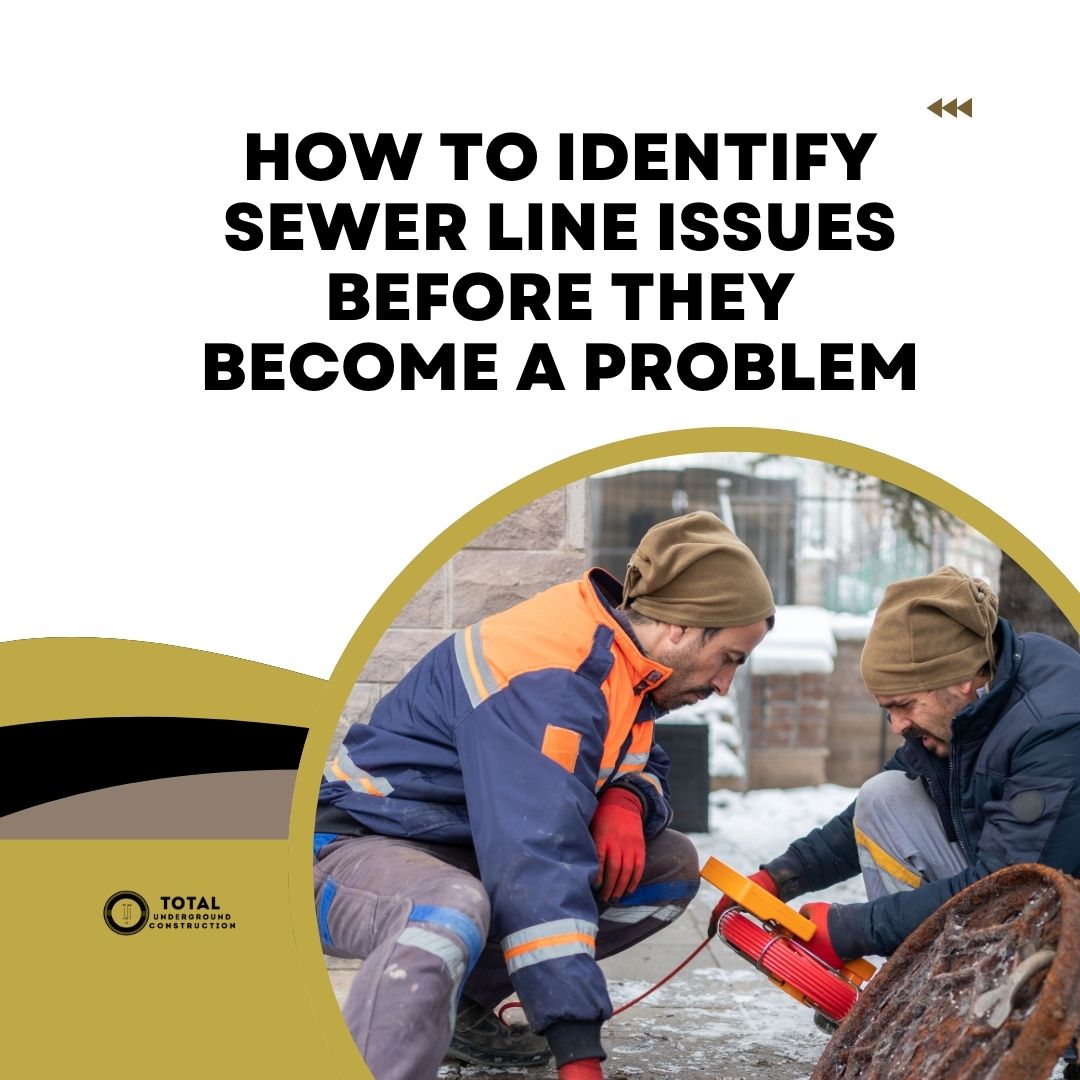A toilet backup is every person’s nightmare, whether you are in the comfort of your home or a public restroom. As with any other part of your plumbing system, toilet drains can fail. An emergency repair can help prevent a minor setback from escalating into an expensive, unhygienic problem.
Here is an exhaustive list of top toilet backup causes and how to fix them. If the problem persists, it is always smart to call a certified plumber.
Table of Contents
- Toilet Backup Culprits and Ways to Correct Them
- Hygiene Products
- Cleaning or Chemical Products
- Non-Flushable Items
- Standard Waste Clogs
- Sewer Line Clogs
- Blocked Air Vents
- Older Low-Flow Toilets
- Toilet Flapper Issues
- Clogged Toilet Trap
- Low Water Levels
- Hard Water
- A Cracked Toilet Bowl
- Insufficient Water Tank Levels
- An Overloaded Septic Tank
- Outdated Pipes
- Professional Plumbers to Fix Toilet Backup
Toilet Backup Culprits and Ways to Correct Them
1. Hygiene Products
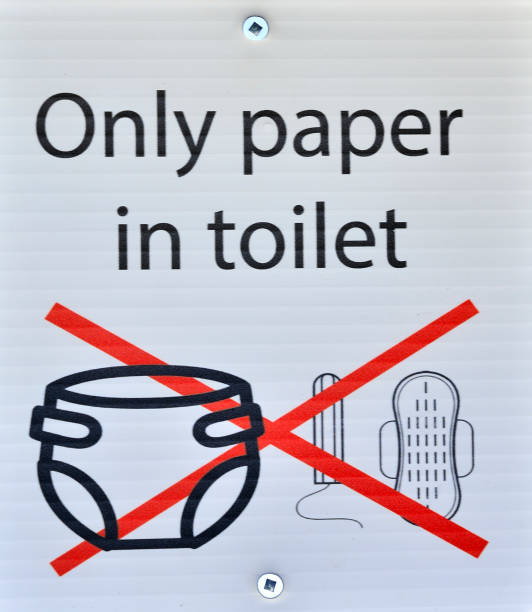
Flashing down foreign objects increases the likelihood of your toilet blocking. Avoid flushing down hygiene products like wipes, diapers, facial tissues, tampons, dental floss, or cotton balls. Hygiene products absorb water and increase with time, forming soft blockage that prevents waste from flowing through the drain.
Fix: You can prevent toilet backup from hygiene products using a flange plunger, ensuring it fits on your toilet drain. Create a seal and pump the drain to clear the clog.
2. Cleaning or Chemical Products
Cleaning products like antifreeze, automotive fluids, or paints are also culprits of toilet backups. Strong cleaning products and paint can thicken and solidify on the toilet drain, gradually reducing its diameter. Eventually, incoming waste will accumulate on the limited path backing up the toilet.
Fix: If you notice after draining such fluids that there are no toilet flush drains and the bowel is backed up and gurgling, it could be a semi-clog from the reduced diameter. You can undo the blockage by pouring hot water down the drain to melt the solidification. Mix baking soda and vinegar, create a solution with hot water, and pour it on the toilet to clear stubborn clogs.
3. Non-Flushable Items
If you have kids, it may not be strange to find toys or small household items floating on the toilet bowl or clogging the drain. Non-flushable items can block the drain. Their non-porous nature can obstruct wastewater flow completely.
Fix: A plumbing snake can push, turn, or break non-flushable items. Insert the snake line into the drain, turning the handle to advance it toward the clog. Once you feel resistance, turn the handle to break it. Continue advancing the plumbing snake until it can pass through the blockage. Retrieve the snake and clear any accompanying debris.
4. Standard Waste Clogs
Aside from foreign objects, sometimes toilet waste can cause a toilet backup. When the waste volume is more than the drain can take or too much tissue paper ends in the toilet line, you may have a clog due to the amount of waste.
Fix: You can clear the backup using a flange plunger. The seal in a flange plunger forms a vacuum when pushed and pulled. The resulting pressure expels the waste clog when you flush the toilet. Use toilet paper sparingly to prevent clogs.
5. Sewer Line Clogs
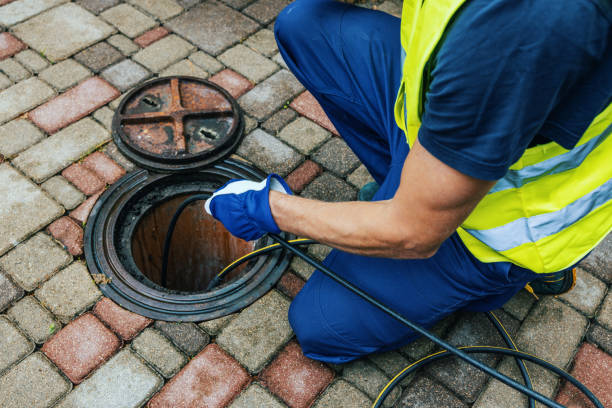
Your home has several drain lines that carry wastewater from the toilet, sink, tub, and other drains to the main sewer line, which ultimately drains to the municipal line or septic tank. A clog in the main sewer line can cause the sink, toilet, and tub to be backed up simultaneously. Clogs in the sewer line often result from root intrusion, waste buildup, debris accumulation due to soil infiltration, or drain line breakage.
Fix: Consider hiring a plumber to inspect, diagnose, and fix the clogged main sewer line. A plumber has the resources and expertise to break the clog without damaging your pipes.
6. Blocked Air Vents
You may have noticed an air vent in your roof that links to your plumbing system. Aside from letting in the fresh air and preventing foul odors from permeating your home, vents control the wastewater flow each time you flush the toilet or drain the sink. Vent clogs from debris, dust, or leaves interfere with wastewater pressure flowing in the drain, increasing the risk of your toilet backing up.
Fix: You can maintain wastewater flow by regularly cleaning your plumbing system air vents to ensure maximum air circulation and retain the wastewater pressure.
7. Older Low-Flow Toilets
How old are your toilets? The federal law in the early 1990s mandated water-saving toilets. However, these toilets required multiple flushing to clear waste, increasing the likelihood of tissue clogs.
Fix: If you have an old toilet and notice frequent backups, it may be time to replace it to keep up to date with the code. The current toilet models have an improved mechanism with minimal water usage and clogging incidences.
8. Toilet Flapper Issues
Clogs are prone in toilets with weak flushes. The probability of a blockage and backup increases if your toilet restrains water during flushing. A broken or displaced flapper interferes with water flow.
Fix: You can fix a flapper by adjusting the chain that connects it to the flash handle. If the issue is wear and tear, replace the flapper. Close the toilet water supply. Unhook the chain from the flush handle lever and remove the old flapper from the overflow tube. Place the new flapper over the overflow tube and hook the chain from the flush handle lever back onto the flapper.
9. Clogged Toilet Trap
The toilet s-trap is between the drain and the toilet bowl. It traps substances, gradually clogging the toilet.
Fix: You can stop the buildup by frequently plunging the toilet when you notice the wastewater flow rate is slow. If plunging doesn’t resolve the backup, call a plumber to inspect the drain, accurately diagnose the problem, and implement the recommendations.
10. Low Water Levels
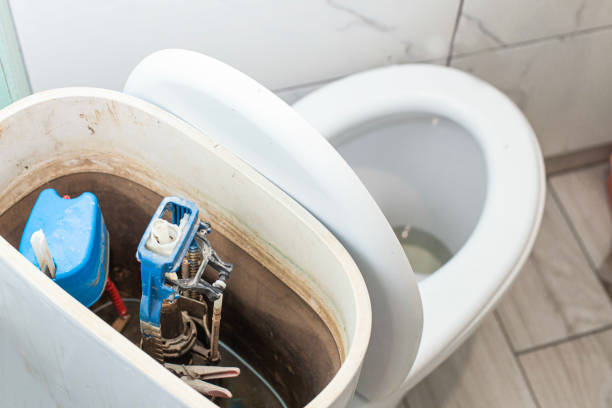
Insufficient flushing water can also be a consequence of an incorrectly adjusted float. The float connects to a fill valve, which lets water into the cistern in response to the float’s ascent. The float’s position inhibits the valve once the water reaches a certain level.
An incorrectly adjusted float will reduce the water volume entering the system. Low water levels, in turn, increase clogging risk.
Fix: Replace the float if it is leaking or punctured. If the float sticks downwards, gently move it to enable it to rise. You may need to replace the fill valve and float if their connector is worn out.
11. Hard Water
If your municipality or borehole supplies salty water–usually with dissolved calcium and magnesium–the probability of clogging your toilet drain increases gradually. Salt deposits coat drains, reducing their diameter. Without regular drain cleaning, the thickening layer will interfere with wastewater flow, resulting in a backed-up toilet.
Fix: You can counter hard water problems by installing a water filter system on your main water line.
12. A Cracked Toilet Bowl
Another culprit behind low water levels in the toilet is a cracked or leaky toilet bowl. Water levels influence your toilet’s efficiency in clearing waste. A crack reduces the optimum water level and increases the chances of contamination.
Fix: Since it is impossible to repair a broken porcelain toilet bowl, you will have to replace the entire toilet. Hiring a professional plumber is the best way to replace a faulty toilet.
13. Insufficient Water Tank Levels
Water levels in your water tank can cause a toilet backup. Low water levels in the tank can occur because of damaged water supply lines and broken seals, inhibiting the water tank from filling to the brim. Low-flush strength toilets also interfere with the water tank’s filling potential.
Fix: Identify the cause of the insufficient water levels. Replace the compromised gasket if it is causing a minor leak. Check for mineral buildup in the overflow tube, which allows water to escape the tank when filled, and clean it. You may also need to replace the overflow tube if cleaning does not work.
14. An Overloaded Septic Tank
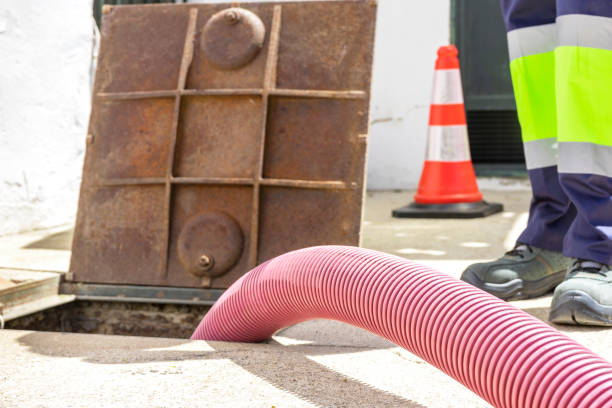
Septic tanks have limits on the amount of wastewater they can hold. If you exceed the threshold, you may experience your toilet backing up but not clogged. An overloaded septic tank will also affect all your drain lines.
Fix: Pump the septic tank to contain the problem. Avoid filling up the septic tank to full capacity without regular pumping. You can schedule regular maintenance, which also includes waste removal to keep the sewer levels manageable at all times.
15. Outdated Pipes
Weak, worn out, or compromised sewer lines are vulnerable to root and debris intrusion and breakage. The deteriorating structure can’t maintain water flow, leading to bathtub, sinks, kitchen, and toilet backups. Pipes wear out over time. Heavy traffic in commercial drain pipes can accelerate wear and tear, increasing backup incidences.
Fix: Regular sewage and drain line inspections, cleanups, and repairs can help you identify outdated pipes early, preventing backups. Certified plumbers provide comprehensive inspection services at affordable rates. Leverage their industry-grade technologies like high-definition cameras for trenchless solutions.
Professional Plumbers to Fix Toilet Backup
While DIY solutions can help you contain a backed-up toilet, the intervention is momentarily at best. You can resolve the problem permanently with certified plumbers trained to resolve all your plumbing system issues. Call us at 415-350-3363 for all your toilet drain needs.


